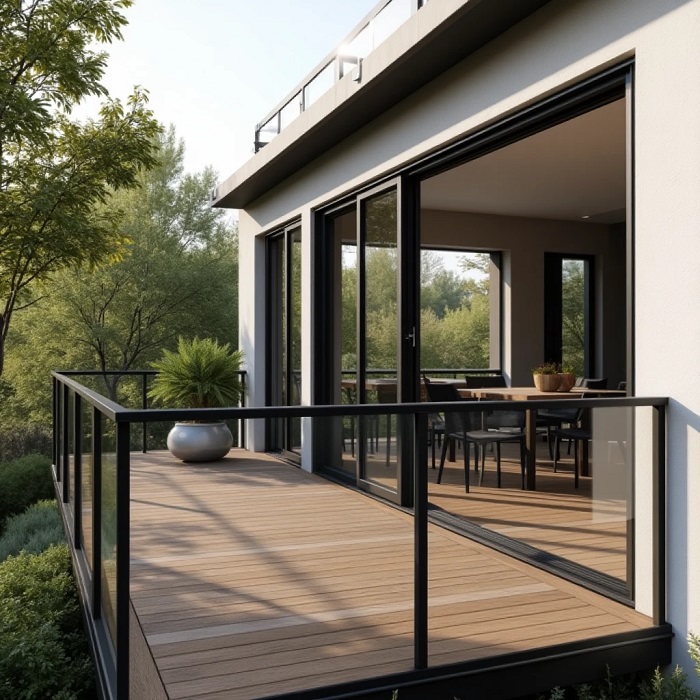
17 Apr How to choose the right railing system for your home: key factors and mistakes to avoid
Selecting the perfect railing system for your home is about much more than just looks — it’s about safety, durability, and functionality. Whether you’re renovating a deck, updating stairs, or planning a new balcony, making the right choice can dramatically improve your property’s value and style.
https://alumprorail.ca
But with so many railing materials and styles on the market, how do you pick the one that’s right for you? In this article, we’ll break down key considerations, common mistakes, and why glass and aluminum railings remain a top choice for Canadian homeowners.
1. Start with the Purpose of Your Railing
Ask yourself: What’s the primary purpose of the railing?
- Safety — especially around decks, staircases, and pool areas.
- Privacy — frosted or tinted glass may be ideal.
- Aesthetics — clean lines, modern feel, or blending with nature?
- Wind protection — especially for rooftop terraces or open balconies.
Knowing your goal helps you quickly eliminate options that won’t serve your needs.
2. Understand the Materials: Wood vs Steel vs Aluminum vs Glass
Each material has its pros and cons. Here’s a quick comparison:
- Wood: Classic but requires frequent maintenance. Prone to rot, warping, and repainting.
- Steel: Very strong, but heavy, expensive, and can rust.
- Aluminum: Lightweight, rust-resistant, and low maintenance. Great for long-term use.
- Glass: Sleek, modern, and opens up views. Must be tempered safety glass.
In many modern homes, aluminum and glass combinations offer the perfect blend of performance and style. For example, systems from
https://alumprorail.ca
provide weather-resistant, sleek solutions designed for Canadian climates.
3. Match the Style to Your Architecture
Your railing system should complement, not clash with, your home’s existing style.
- Modern homes benefit from minimalist, frameless glass or aluminum railings.
- Traditional spaces might suit picketed railings with darker powder-coated finishes.
- Cottages or cabins could work well with mixed wood and aluminum for a rustic-modern vibe.
Color customization, panel types (clear, frosted, tinted), and top rail options all influence the final look.
4. Check Building Codes and Local Regulations
In Ontario and across Canada, certain building code rules apply to railings:
- Minimum height (usually 36″ or 42″)
- Maximum gap between elements (typically 4″)
- Structural strength and safety standards
- Pool barrier codes, if applicable
Working with a certified professional ensures your installation is not only beautiful but also safe and fully legal.
5. Think Long-Term: Maintenance and Warranty
Homeowners often overlook maintenance, but it makes a huge difference over time.
- Wood requires staining, sealing, and repainting.
- Steel must be treated for rust.
- Aluminum is maintenance-free with powder coating.
- Glass just needs occasional cleaning.
Look for systems that come with a solid manufacturer’s warranty — a good sign of product quality.
6. Common Mistakes to Avoid
- Choosing based on looks only — without considering environment or safety.
- Ignoring slope or surface type — not all systems install the same way on concrete, wood, or stone.
- Going full DIY with no experience — a small mistake can lead to big safety risks.
- Buying cheap materials — they fade, warp, or fail faster.
Conclusion
Your railing system is both a functional safety element and a major design statement. By focusing on purpose, material, compatibility, and code compliance, you can make a smart, stylish, and safe investment for years to come.
If you’re unsure where to begin or want expert advice on modern railing systems, visit Alumpro
— they offer high-quality aluminum and glass options designed for Canadian homes, along with professional installation services that ensure everything is done right the first time.




No Comments